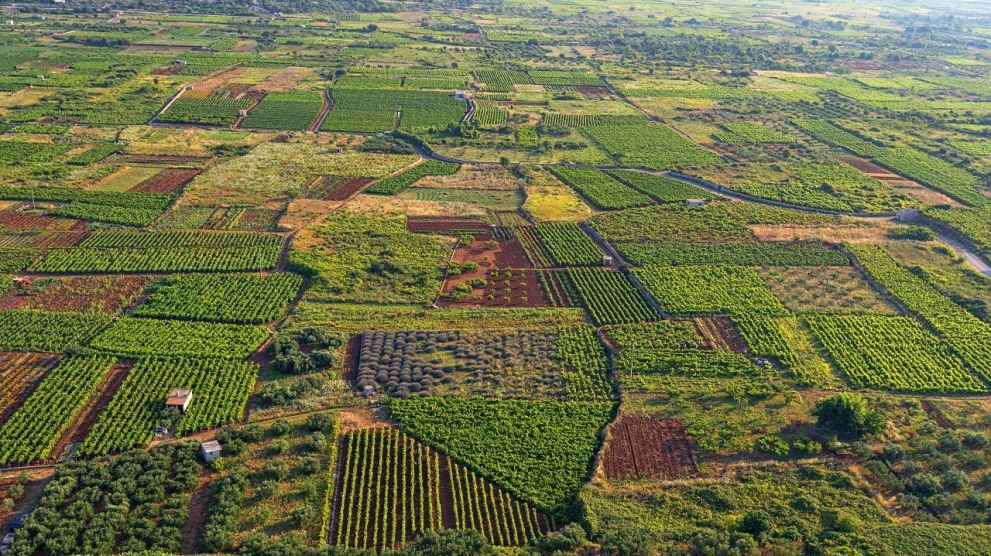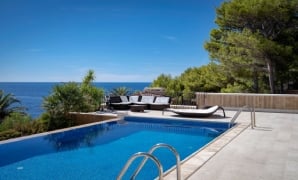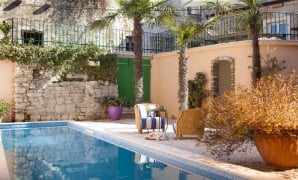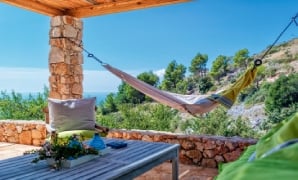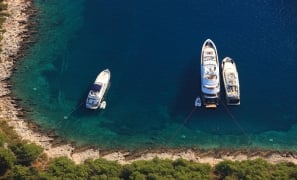What makes a destination unique?
With so much competition for tourists these days, and with mass tourism making many destinations increasingly similar experiences, finding that perfect destination with its own unique selling points can be a challenge, but not on this gorgeous island. Here are 10 things you can only find on Hvar.
1.Oldest public theatre in Europe
Amazing but true, the oldest public theatre in all Europe can be found on the main square in Hvar Town. Located on the first floor above the impressive Arsenal building which guards the entrance to Dalmatian’s largest square, the Hvar Public Theatre opened in 1612. Currently undergoing extensive renovation, the theatre is set to reopen soon.
2. The birthplace of organised tourism in Europe
1868 was an historic year in the history of European tourism, for the founding of the Hvar Health Society in 1868 is credited as the birthplace of organised tourism in Europe. The society’s doors were opened on May 15, with the convalescing aristocracy of the Austro-Hungarian Empire taking advantage of the temperate climate of the island known as "the Austrian Madeira" – an anniversary which was celebrated in some style this year, 150 years later.
3. CSI Hvar – the home of fingerprinting
The next time you watch a crime thriller where fingerprints are taken, think of your favourite Dalmatian island, for the science of dactyloscopy developed thanks to the efforts of Hvar man, Ivan Vucetic, whose interest in the bloody fingerprints of a murder case in Argentina led to the discovery of the uniqueness of fingerprints and their subsequent importance in solving crimes. Vucetic would have been 160 this year.
4. Forget tequila, lace from agave
In Mexico, they use if to make tequila, but the Benedictine Nuns of Hvar Town have been quietly making lace from the thread of the agave plane for centuries. The nuns recently celebrated 350 years of life on Hvar, and their lace has been inscribed as intangible UNESCO heritage.
5. More sun than the rest of Europe
If you are looking for a little sunshine next summer, where is the best place to choose? The sunniest island in Europe, perhaps, and with Hvar’s average of 2,718 hours of sun each year and a rumoured free hotel room if it snows, there can’t be many better options.
6. More UNESCO heritage than any island in the world
An island of culture, so much so in fact that no other island has more UNESCO heritage than the five claimed by Hvar. From the UNESCO World Heritage Site, the Stari Grad Plain, to the intangible heritage of that agave lace, the Za Krizen Holy Week Procession, its Mediterranean diet and the klapa singing of southern Dalmatia, Hvar is an island of culture and tradition at every turn.
7. Indigenous grapes as Gifts from God
Croatia has some 130 indigenous grape varieties, with several of them only to be found on Hvar, including one – Bogdanusa – which loosely translates as a ‘gift from God.’ The gifts are plentiful, and other local varieties to look out for include Prc, Darnekusa, Palarusa, Kurtelaska and Mekuja.
8. The only Master of Wine producer in all Croatia
And with so much indigenous grapes to play with in an increasingly globalised wine scene, it is perhaps not surprising that a Master of Wine would choose Hvar as the first location to make wine in Croatia. Jo Ahearne MW arrived on Hvar in 2014 and now has an exciting range of red, white and rose wines which have won much critical acclaim (one was even named in the top 10 in all Croatia in 2017), all of which are produced using local varieties. Hvar grapes, London hands.
9. An edible dormouse festival
Hvar’s UNESCO Mediterranean Diet is one of the healthiest in the world, with world-class olive oils and wines, together with the daily catch from the Adriatic and local, seasonal vegetables. Travel to the inland village of Dol, however, for an altogether more unusual delicacy, the edible dormouse, whose name lends itself to the biggest festival on Hvar each year – the Puhijada, a week of tradition, culture and dormouse gastronomy.
10. The oldest olive tree in all Croatia
Hvar’s olive tradition is well-established, and its oils have won international gold medals as far away as New York, as well as reaching an incredible price of £3,750 a litre in exclusive London store Harrod’s. The Ancient Greeks brought olive trees and vines when they sailed into Stari Grad Bay in 384 BC, and there is at least one tree on Hvar which has been officially dated back to that time and has been under protection since 1964. The tree, located close to the village of Zastrazisce, has been dated at about 2,500 years, making it one of the ten oldest in the world.
And you thought Hvar was just nightlife and beach...
*Author - Paul Bradbury
*Photo Credit - AGER by Rafael Janic Photography
